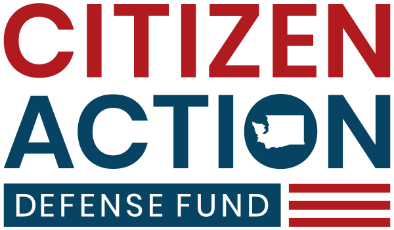
Happy Friday, Washingtonians! We are back after a weeks-long laser-focus on a client matter. You can accuse us lawyers of a great many things. Many of us are, at least at times, contrarian grammarians engaged in pedantic semantics. At our worst . . . persnickety precisionists squabbling before jurists over supernumerary nomenclature. We are, however, rarely idle. That said, I do wish to apologize for our blogular (blogule? blogial?) absence these past few weeks—weeks that have seen many crucial developments in Washington law and politics. In the spirit of our prodigal return, it is only proper we run through some of the biggest items we missed. We know you all have waited with bated breath for the resurrection of our ever-erudite takes on the moving, shaking, and various other goings-on in Olympia. We will not disappoint.
First, the session gaveled in under the shadow of a forecasted $10 to 16 billion budgetary shortfall over the next four years, against an annual budget of about $75 billion (which could jump to almost $80 billion by 2027. Too many of our lawmakers continue the myth that we can simply tax our way out of this perpetual spiral. This session that mythos took some bold turns. As always, there are hems and haws for a state income tax, a levy that even at high rates has not prevented budgetary crises in Oregon and California, for example. But that’s not all, those in the tax-first-ask-questions-later camp are also proposing a wealth tax—“a tax of $10 on every $1,000 of assessed value of certain financial assets . . . held by individuals with more than $50 million dollars.” Beyond the inevitable economic dangers of forcing around 4,300 individuals to a fire sale on 1% of unrealized investment earnings (again, “assessed value,” not “assessed gains”), this rough estimate of Washingtonians with more than $50 million in assets would almost certainly quickly dwindle into the dozens. If Bezos would leave to save just one of his now 217 billion dollars, you better believe some cats with 50 or 100 million would swap domiciles (often a simple paper move) to save even 1% of theirs (1% every year, that is). Combine these ingredients with pushes to remove the 5% and 1% caps on payroll and property taxes, respectively, and you have a perfect recipe for wealth and brain drain.
Next are the various efforts to squeeze cash out of commuters who have experienced years of unremitting decline in public infrastructure. Amid spotty ferry services and subpar highway maintenance, one of the worst in the country, the state senate has approved a 6-cent-per-gallon increase in the gas tax, effective July 1, with subsequent annual adjustments tied to inflation. This initiative is part of a broader strategy to generate approximately $500 million annually for transportation projects, addressing critical needs in maintenance, preservation, and safety improvements. But this is likely too little, too late. Factor in fare increases, new credit-card transaction surcharges, and rising tolls. Also on the menu of consumer-unfriendly options are road user charge and highway-user-fee bills which, together, would add several new line-items to the panoply of payments commuters already fork over to the state for the “privilege” of using taxpayer-funded roads.
On to cuts, cuts, and more cuts—and the odd choices on what to go after first. As wildfire season approaches, state officials warn that budgetary shortfalls heighten risks to public safety and exacerbate the challenges of managing increasingly severe seasons. See “California.” Risky, too, are proposals across one or both houses to reduce state-employee pay (the unions will love that!), university funding (the kids will love that!), and law-enforcement spending in general (ours is a low-crime state, right??).
Finally we have the Ferguson administration’s smorgasbord of early executive missteps on budgeting. These include a 6% reduction of each state agency’s operating budget, more unpaid state-employee furloughs, and clampdowns on official travel and per diem spending. Note CADF is not against reining in government spending—of course, we are very far from it. But watch closely. There is much murmur already to suggest that these particular cuts will prove a rollout without real follow-through.
All in all, it has been a very busy few weeks at and around the Capitol. Governor Ferguson and his legislative allies are off to a shaky start, making too many promises that cannot feasibly be met; offering strange workarounds to budgetary shortfalls that require head-on confrontation—indeed, this approach is decades overdue. If the first several weeks of this year’s legislative session is any indication, Washingtonians are in for an even bumpier ride than Inslee provided—and that’s before the car-of-state reaches our severely underfunded highways.
CADF, its donors, and allies will continue fighting the good fight in and out of court, to ensure that Washington works for Washingtonians. Sometimes the sinew of the fight demands fewer blogposts—at least for a time. We trust that you, dear reader, are comfortable with that compromise.
Alki,
Sam Spiegelman

